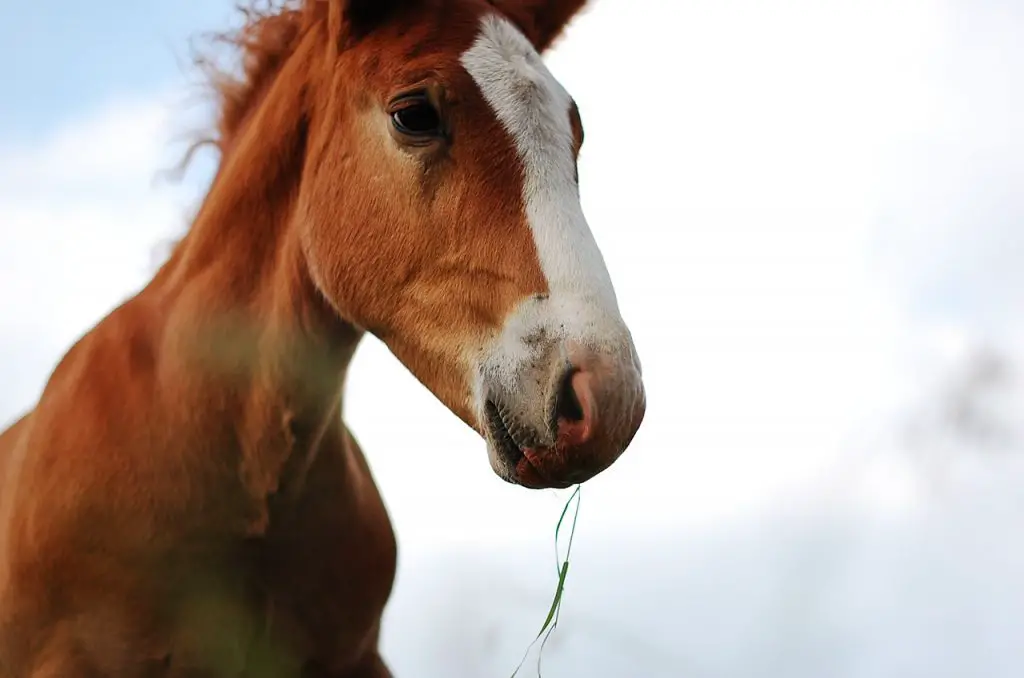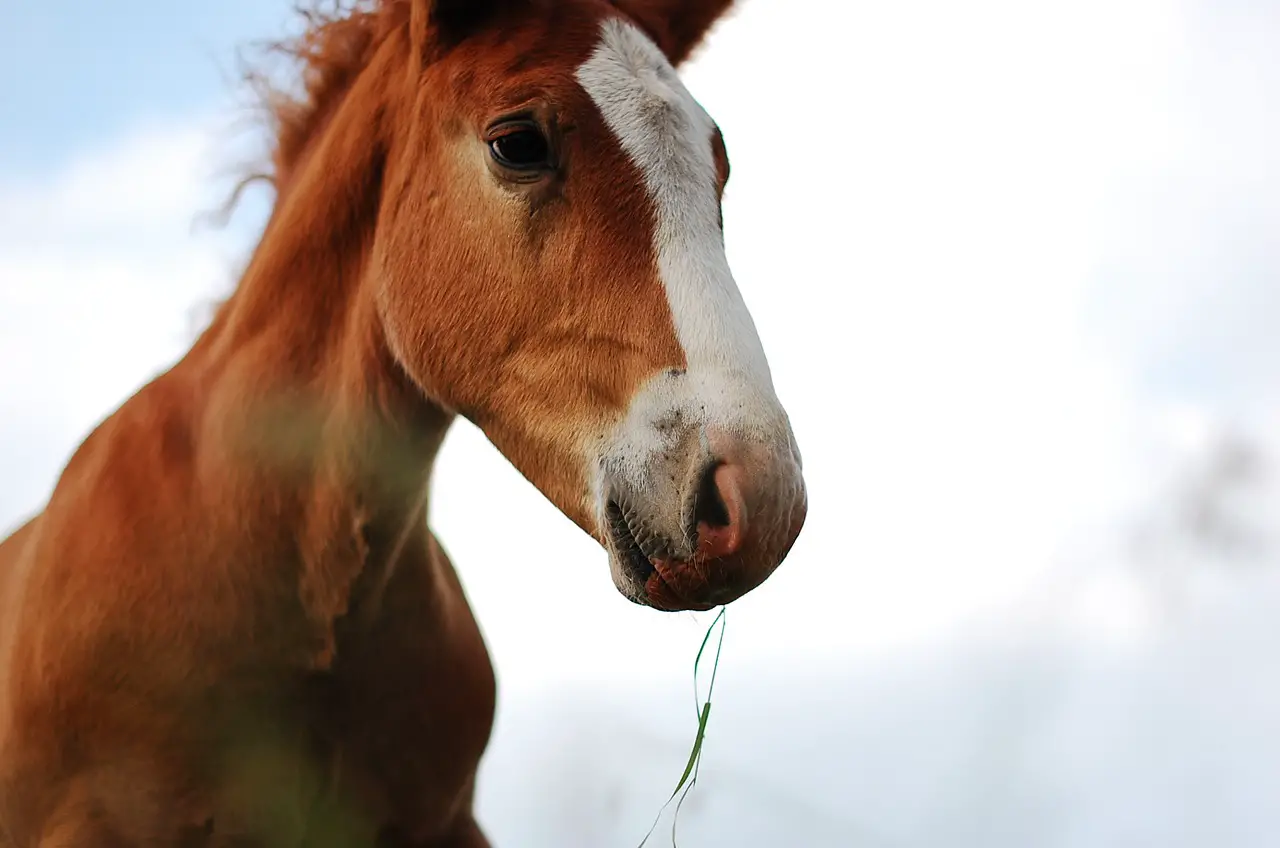Last Updated on March 2, 2022 by Allison Price
Horses can have a variety on their faces, which adds to their individuality and makes them stand out. Although white markings are frowned upon by some horse breeders, they can often give horses an extraordinary visual appeal. Why do horses have white marks on their faces?
The genetic and environmental factors that determine horse face markings are important to understand. Blazes, strips and snips are the most common markings on horses’ faces. Bald face, medicine cap, apron and badger are rarer white colors. These markings can be combined or used in their own right.
You might wonder what to call a horse with a prominent white mark across his face? These iconic white markings are how they came to be on modern horses. Here are some ways to distinguish them.
What are the Different Types of Horse Face Markings?
White markings add personality to horses’ faces and are an important distinguishing feature for horses. To aid in situations like theft or loss, white markings can also be used to identify a horse’s individual horse. Each horse is different, but they all fall within a broad range of colors.
Your horse’s facial markings will be classified based on the placement, shape and location of its white markings. You don’t have to worry if your horse doesn’t fit the description.
1. The Blaze Pattern
One of the most popular types of horse coloration is the blaze pattern, which is white on a horse’s face. The blaze starts at the horse’s forehead, and continues down to the bridge of the nose. They can be either symmetrical or unsymmetrical in their shape. Their increased width makes them distinct from the stripe pattern.
2. The Star
A star is a white patch of hair on the forehead of horses. The star can be a diamond-shaped or irregularly shaped splotch.

The star is located parallel to the horse’s center, above his eyes. It may be smaller or larger depending on the horse. However, typically, the skin underneath the star will be lighter than the surrounding skin.
Grey horses may have more difficulty spotting stars as they are less visible and can be difficult to identify.
The American Jockey Club star designation breaks down the star shapes into:
- A small star refers to stars less than one-and-a-half inches in diameter
- Large Star – A star that is larger than three inches in diameter
- Star with the Four-Pointed Shape of a Diamond
- Left/Right-Pointing Diagonal Stars usually have a thin mark that points to the horse’s left or right ears.
- Horizontal Stars are often narrow and lie parallel with the eye.
- A Vertical Star has a general up-and-down shape
- A Curved Staris a thin star that is shaped like a C or a crescent moon. Its open side can face the top, left, or bottom of the head.
- The Oval Starhas a egg-shaped or rounded appearance
- The Heart Star is shaped like a heart
- Irregular Stars Are stars that are not in conformity with a standard shape.
- Triangular stars follows the shape of a triangular triangle
- A Pointed star can have one or more points. If it only has one point, be sure to note the direction.
- A Bordered starhas a mixture of white and coat colors at the edges
- A Mixed Star is a combination of white and coat color hairs that forms a star-shaped shape. It’s often called a Faint Star.
3. The Strip
A strip (or stripe), is a strip of white that runs along the horse’s forehead. It can be more or less uniformly white and runs down the middle of the horse’s face. The strip runs along the nasal bone and is typically narrower than a blaze. Equestrians refer to the strip as a “stripe” or a “race” when it follows a slightly wavy path.
A strip is usually described by its width, length, type. It may be connected, disconnected, broken, depending on how it was formed.
4. The Snip
A snip is a white line between the nostrils of a horse’s nose where the pink skin below is often visible. The snip may extend to the nostrils as well as to the upper lips. It may also connect to a strip and blaze. A snip may include a small patch of white, or the entire nose.
5. Chin or Lip Spot/Patch
Chin spots, fleshy or white-colored spots that are usually small and located in the upper or lower lip or under the chin, are often fleshy or white. They can range in size from a small patch up to large areas of discoloration.
6. Bald Face
A baldface is a dramatic marking on horses’ faces. It is often called a “white face” and refers to the fact that nearly the entire head of a horse has been colored white. The white usually covers one eye and extends down to the sides.
This coloring is very common in American and Pinto paint horses. It is eye-catching but can also pose health risks. Horses with a lot of white on their faces may become deaf and more susceptible to sun-damaged cancers. This coloration can also be seen with either one or both of the blue eyes, and may extend to the muzzle.
7. Ermines
Ermines are dark colored spots that can be found in an area with white facial skin. They can be round or asymmetrical in shape. These irregularly placed spots are also known as Bend-or or Smut spots. They can range in color from dark red to black. This coloration is most common on darker horses breeds such as palominos and chestnuts. It also appears as the horse gets older.
8. Interrupted/Blaze/Strip
Traditional blazes or strips don’t always run smoothly down horses’ faces. Sometimes they break off and then resume lower down the face. These markings are known as an “interrupted” blaze or strip.
9. Medicine Hat
The unusual medicine hat facial coloring is a hat-like appearance. It is composed of almost all white faces with only a small amount of horse’s primary colors at its top. These white colorations give horses the illusion of wearing a hat made of their primary color.
First Nation legends tell of these highly sought-after facial markings. They believed they had enhanced protection and helped the rider hunt. Native Americans often painted white areas on horses’ faces to increase the mystical powers of their horse. The theft of a medicine hat horse from another tribe was considered an evil sign.
10. Badger Marking
This is an unusual facial marking that occurs when the horse’s primary color is superimposed on a white background. This coloratura could be described as a reversed blaze. The horse’s primary color is the blaze.
11. Apron Marking
The unusual ‘Apron” markings look similar to the extensive baldness. The white is wider between the eyes, and narrower at the muzzle. The white strip above the eyes is usually narrower and does not always extend to the full width of the horse’s eyes. The white areas below the head appear much like an apron for a lady.
12. Combination Markings
Not all horses’ facial markings will fit into the same classification. A horse’s markings may include a star, a snip, or an interrupted flame. Combination markings are used to refer to horses with multiple facial markings. This reminds us that every horse is unique.
History of Horse Coat Colors
Experts believe humans formed their first relationship with the noble horse nearly 6000 years ago in Central Asia (now known as Kahaskistan). This relationship would have a profound impact on human history, changing the way we trade and transport. Domestication also brought about fundamental changes in the horse’s coat, including white markings on their heads and lower limbs.
Archeologists believe that Hyracotherium, also known as Eohippus, is our horse’s ancestral ancestor. It dates back to the Eocene period between 35 and 55 million years ago. These horses were born in the northern hemisphere, and emerged in North America as Equus around 2.6 million years ago.
Experts agree that the original colors of the coat were light brown. They ranged from yellowish-light brown to dark brown with darker mane and tail points. This would be the coat color that is more likely to protect and camouflage predators. Appaloosa and black coloring were evident in primitive horses as early as the Holocene.
Horses can only produce two pigments technically. However, environmental and climatic factors could have caused coat color variations through dilution or redistribution and lack of pigmentation. Domestication led to the confinement of primitive herds and concurrent restrictions on mating which resulted in a wide range of colors including those seen today.
The base color of a horse’s hair is the color of its coat. There are genetic directives that prevent the development of color due to melanocytes in that area. The white marks on a horse’s coat are not due to a lack in pigment in the melanocytes, but rather a deficiency of melanocytes in the affected area.
What causes white marks on horses’ faces?
Scientists consider the Przewalski Horse (Equus Caballus Przewalskii), the closest wild living relative to horse species. These horses have no white markings. Primitive cave paintings do not mention white colorations, and primeval Asiatic horses lack this trait tend to suggest that white colorations are the result of domestication.
Researchers agree that white facial marks are inherited from multiple factors after more than a century of scientific research. Research suggests that white facial markings’ phenotypic variation is determined by 35% genotype and 14% environmental factors. Early research suggests that environmental factors may be due to random and accidental events that affect the survival, migration, and proliferation of the melanoblast.
Recent research on Swiss Franches-Montagnes horses has extended the hypothesis of genetic heritability. It also shows that MITF, MCIR and KIT gene mutations are more common than MITF.


